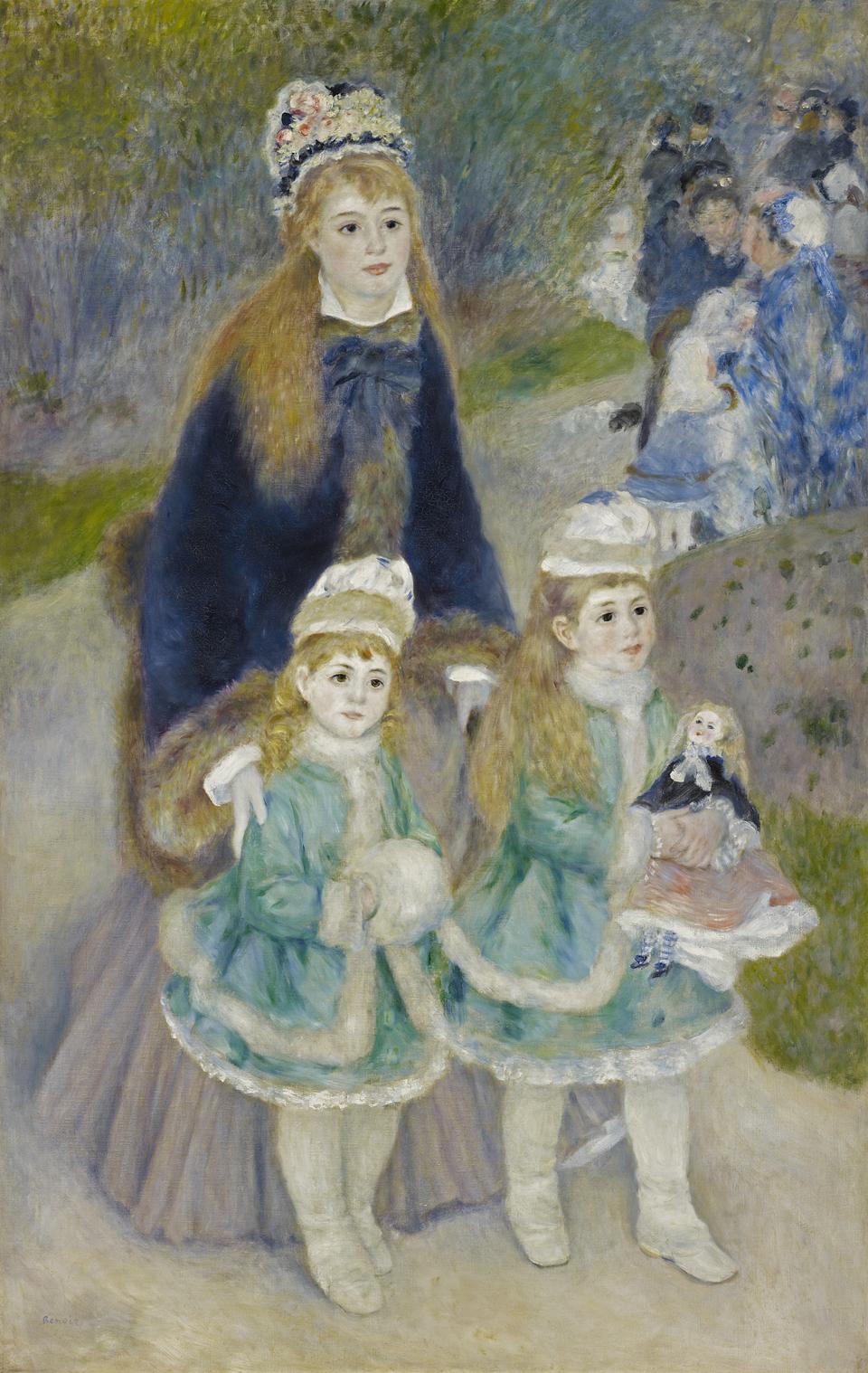In early 2012, The Frick Collection presented an exhibition of nine iconic Impressionist paintings by Pierre-Auguste Renoir, offering the first comprehensive study of the artist's engagement with the full-length format, which was associated with the official Paris Salon in the decade that saw the emergence of a fully fledged Impressionist aesthetic. The project was inspired by La Promenade of 1875–76, the most significant Impressionist work in the Frick's permanent collection. The exhibition explored Renoir's portraits and subject pictures of this type from the mid-1870s to the mid-1880s. Intended for public display, these vertical grand-scale canvases are among the artist's most daring and ambitious presentations of contemporary subjects and are today considered masterpieces of Impressionism. On view only at the Frick, Renoir, Impressionism, and Full-Length Painting was a landmark exhibition, bringing together, with the Frick painting, several beloved masterpieces from around the world. Works on loan from international institutions were La Parisienne (1874) from the National Museum of Art, Cardiff; The Umbrellas (c. 1881 and 1885) from The National Gallery, London (first time since 1886 on view in the United States); and Dance in the City and Dance in the Country (1882–83) from the Musée d'Orsay, Paris. Works on loan from American institutions were The Dancer (1874) from the National Gallery of Art, Washington, D.C.; Madame Henriot "en travesti" (1875–76) from the Columbus Museum of Art; Acrobats at the Cirque Fernando (1879) from the Art Institute of Chicago; and Dance at Bougival (1882–83) from the Museum of Fine Arts, Boston. The exhibition was shown in the Frick's East Gallery, a space often used for the display of full-length portraits from the institution's permanent collection. Renoir, Impressionism, and Full-Length Painting was organized by Colin B. Bailey, the Frick's Associate Director and Peter Jay Sharp Chief Curator.
The exhibition and accompanying catalogue offered fresh insights into Renoir's complex ambitions, when, as a young artist, he submitted works to both the avant-garde Impressionist exhibitions and the official Salon. While painting in the new Impressionist style, Renoir remained uniquely committed to the full-length format—a traditional type eschewed by most of his fellow Impressionists. The project drew on contemporary criticism, literature, and archival documents to explore the motivation behind Renoir's full-length figure paintings as well as their reception by critics, peers, and the public. Technical studies of the canvases themselves also shed new light on the artist's working methods.
The juxtaposition of these full-length works of women brought the glamour of the Belle Époque vividly to life. This format, which bears striking similarities to contemporary fashion plates, afforded Renoir the perfect opportunity to devote himself not only to his sitters, but to the finest details of their dress. The exhibition and accompanying catalogue explored the rich variety of Renoir's painterly technique—the sheer virtuosity of his brushwork in creating silk, lace, mink, and taffeta—as well as the social significance of the garments themselves. From shimmering ball gowns to sumptuous furs, from chic Parisian day dresses to glamorous theatrical costumes, the nine paintings capture the fashions of Renoir's Paris.
Principal funding for the exhibition was provided by The Florence Gould Foundation and Michel David-Weill. Additional support was generously provided by The Philip and Janice Levin Foundation, the Grand Marnier Foundation, and the Pierre and Tana Matisse Foundation. Corporate support is provided by Fiduciary Trust Company International. The exhibition is also supported by an indemnity from the Federal Council on the Arts and the Humanities.
Pierre-Auguste Renoir (1841–1919), La Promenade, 1875–76. Oil on canvas, 67 x 42 5/8 in. The Frick Collection; photo: Michael Bodycomb
